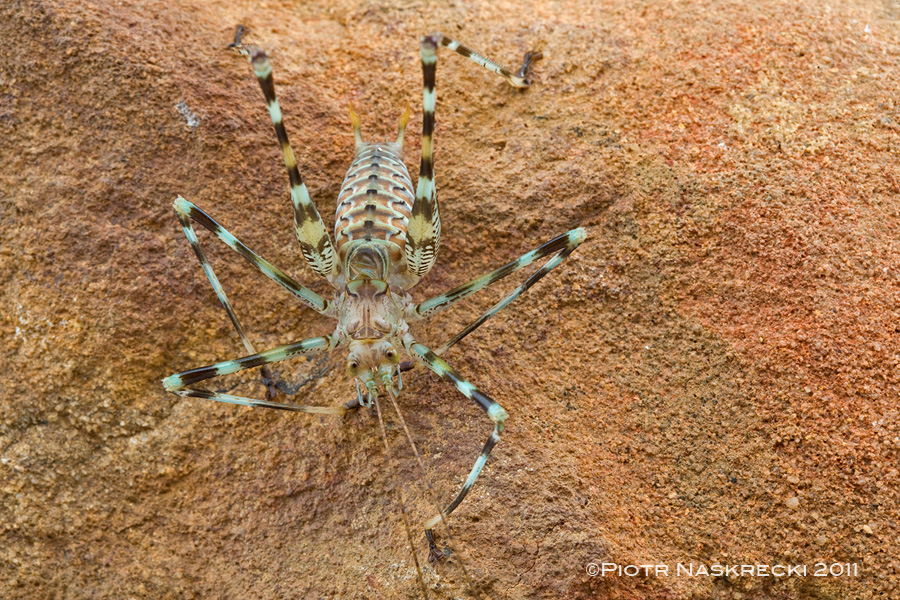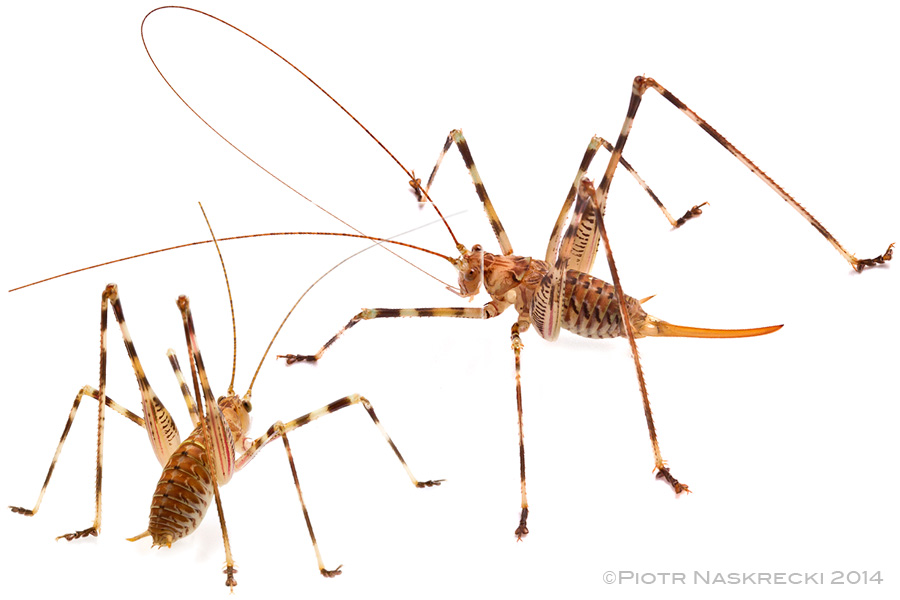
In 1911, after a short and apparently unsatisfying stint as a lawyer, Keppel H. Barnard left his native London and joined the staff of the South African Museum in Cape Town. First a mere lab assistant, he quickly ascended the ranks, in 10 short years reaching the position of the museum’s director, which he held until his retirement in 1956. Barnard’s life was dominated by two seemingly opposite passions. One was the study of aquatic animals, and during his productive career he laid the foundations of modern African ichthyology, carcinology, and malacology. But I probably would have never even heard of him if it wasn’t for his second obsession – mountaineering. In September 1925 his insatiable desire to scramble pointy rocks lead him to the ragged peaks and caves of Cederberg, a mountain range of red, Ordovician sandstone, about 150 km North of Cape Town. Once there, his zoological predilection kicked back in, and made him look into every nook and cranny to collect specimens for the museum. In narrow caves known affectionately as the Wolfberg Cracks he encountered large, spider-like insects, with spindly, striped legs and 6-inch antennae. But neither he nor anyone else knew what to make of them, other than that they might have been katydids.

For 70 years those specimens had sat in a dark corner of the museum until, after a string of my increasingly incessant letters, they were packed with a bunch of other unidentified material and shipped to me, then a young student of entomology working on a revision of southern African katydids. One glimpse at the specimens and I knew that they were special. Not surprisingly they were new to science — an always welcome but not unexpected occurrence. But the fact that the insects had been collected from caves was intriguing — no other katydid had ever been found in such a habitat. Could those be the first such animals? Their morphology certainly seemed to suggest it. Extremely long appendages and pale coloration are the hallmarks of troglophiles, organisms living in caves, and the new katydids fit this pattern.

To add to the mystery, all specimens were immature, and I could only speculate about what the adults might have looked like. I published a formal description of the new katydids, giving them the scientific name Cedarbergeniana imperfecta (immature katydid from Cederberg; now I wish I had named them after Barnard), but ever since I have been dying to find out more about their behavior and biology. Do they really live in caves? What do they eat? Can they sing? Are they solitary, like virtually all katydids, or do they live in groups, like cave crickets?

In the years that followed I have been able to visit Cederberg many times, and collected a lot of data about their biology. Yes, they truly are cave dwelling katydids, the world’s only, and yes, they are highly gregarious, often found in clusters of 20-30 individuals of various ages. The caves they prefer are cold, maintaining the chilly temperature of 12°C (54°F) throughout the year. Their habitat cannot be occupied by bats or hyraxes, which probably quickly do away with the tasty, surprisingly very slow-moving insects, thus limiting the number of available caves (interestingly, when exposed to higher temperatures they become phenomenal jumpers). I know now what sound they produce – a short, ultrasonic click. All their close relatives (katydids of the tribe Aprosphylini) produce long, continuous trills, but such a call would probably cause a lot of reverberation in a cave environment and thus make it difficult for a female to locate a singing male. I also know what they eat, a mystery that had bugged me after seeing the nearly sterile interior of the cave – they leave the cave at night to forage on grasses and other plants growing at the mouth of the cave. This behavior makes them, in technical parlance, trogloxenes.
Last month, during a short visit to Cederberg with my friend Jen Guyton, I approached Wolfberg Cracks with some trepidation. For one, it is a tricky climb and, having witnessed another friend tumble down the mountain and break several bones while looking for cave katydids, I did not want the same thing to happen to me or, especially, Jen – it would be hard to explain why young females who accompany me to the cave always end up falling off cliffs. But I was also worrying about the katydids themselves. Corey Bazelet, my collaborator at the University in Stellenbosch, and I have recently completed the IUCN Red List assessment of South African katydids, and the Cederberg cave katydid unquestionably ranks as Endangered. It is known only from a tiny handful of locations in the Cederberg Mountains, a possible relic of colder climates of the Pleistocene, having found shelter in the cooler environment of the caves. With, what now seems to be unavoidable global climate change, and an already well-documented warming up of southern Africa, I fear that its days are numbered. But, luckily, today cave katydids are doing very well. Jen and I found them to be thriving; I even found an additional, small cave where I had not seen them before.

We climbed back down safely and stopped at a little gift shop at Sandrifft, the highest vineyard in Africa and the legal owner of the Wolfberg caves, and picked up a few bottles to toast to the survival of K.H. Barnard’s incidental discovery, the result of his random collecting that lead to the description of the world’s only cave-dwelling katydid and now, with its proclamation as an Endangered species, its increased protection. If the chances of the katydids’ survival are in any way related to the amount of toasting, they will be just fine.



Such trogloxenes katydids also exist in southern France. They are from the genus Dolichocopoda. There are several species in southern France and also elsewhere in tropical and mediterannean regions.
You can see what it looks like here:
http://tela-orthoptera.org/wakka.php?wiki=DolichopodaAzami
There is also the genus Troglophilus.
Thibaud
The insects living in caves in France are not katydids (Tettigoniidae) but members of a different group of insects, the cave crickets (Rhaphidophoridae). Unlike katydids, cave crickets do not have wings and do not stridulate (and for this reason they also don’t have ears). They are a fascinating animals, even better adapted to trogliobitic lifestyle than cave katydids. Your comment inspires me to write a post about them!
Piotr – Read with enormous fascination! Callan Cohen alerted me to your site – may I repro a pic or two and the gist of the text in our Cederberg blog http://cederbergmap.blogspot.com/ ? I am also very interested in your comments about Keppel Barnard. Barnard used to climb mountains with the botanical collector, T.P. Stokoe. Barnard also collected Colophon beetles from the high peaks of the Western Cape and named the species he discovered after his climbing friends – hence one of them is Colophon stokoei. We wrote a book about Stokoe’s work and it has several references to Barnard – see http://www.slingsbymaps.com/tpstokoe.aspx .
Our Cederberg blog is read mainly by conservators, landowners and biologists and your work on the katydids will be of enormous interest – I will certainly point them to this site.
All the best
Peter Slingsby
Peter, yes, feel free to repost this story. Cederberg is one of my most favorite places on the planet and I am always happy to hear about efforts to help protect it.
I reposted your info on our cederberg blog – received this interesting reply from Torben Wiborg, a science teacher and keen mountaineer. Torben also sent a pic but I can’t sent it to you without your email. Torben’s msg:
Hi Peter
Thanks for the latest blog. Very interesting content, as always.
During the 2014 Easter long weekend, I spent three nights camping, with two friends, near the Boontjieskloof Hut. On one of the days we hiked up the northern side of Skerpionsberg, passing through some interesting rock features and caves along the way. While we were making our way through a rock tunnel, I heard a sudden panic shriek from one of my companions. Not being a great fan of creepy-crawlies, my companion instinctively thought that the koringkrieke were giant spiders hunting together in large groups. To his credit it was quite dark in the tunnel! We were amazed at the sighting. They are certainly the strangest goggas I’ve even seen. Their oversize antennae must serve as very effective organs of touch in the darkness, an excellent example of evolution by natural selection.
Researchers may wish to know the co-ordinates of the tunnel: S32 18 17.0 E19 07 00.9
Regards, Torben
– Hope this is of interest!
– Peter Slingsby
Come to New Zealand and have a look at our Weta’s. They are a bit more primitive. (Weta studios filmed the Hobbit)
That’s awesome. I assume you eventually found some adults?
Wonderful story and species! Is it possible to place them on the 2013 phylogeny? I’m curious how rapidly this transition evolves, how divergent they are, what their sister taxa are like, etc.
Beautiful as usual, thanks for sharing, Piotr.
Beautiful!
Fascinating and beautiful creatures.